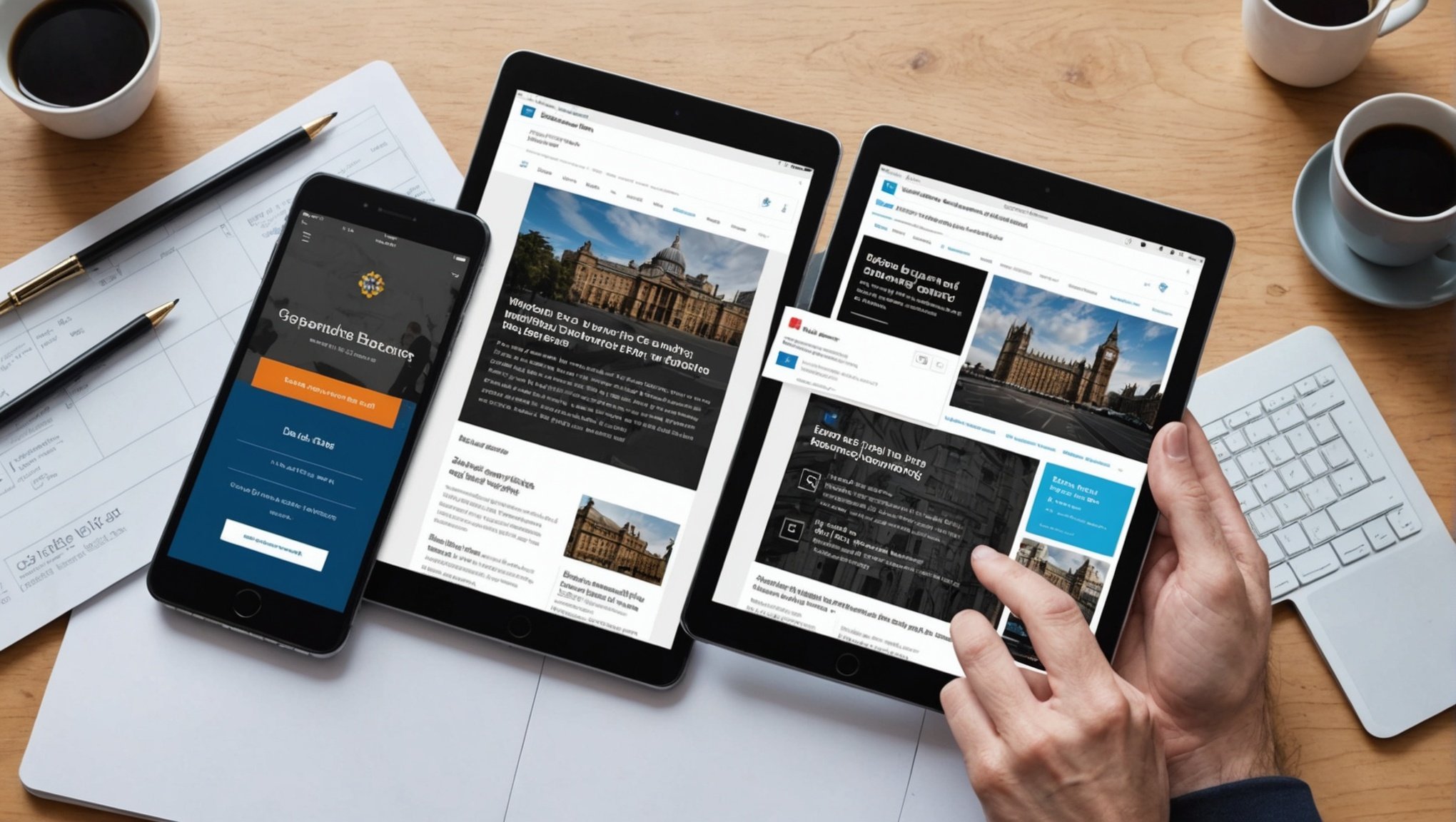Responsive design is essential for UK government websites to ensure accessibility and usability for all citizens. As more users access these sites on various devices, the need for adaptable layouts and scaling elements becomes apparent. Implementing effective strategies can enhance user experience and streamline information delivery. Discover the essential steps to create a responsive design that meets the unique needs of UK government websites, fostering greater engagement and inclusivity for all users, regardless of their preferred technology.
Overview of Responsive Design for UK Government Websites
Responsive design is a crucial element in modern web development, ensuring that websites adapt seamlessly to various devices and screen sizes. This design approach is particularly significant for UK government websites, where accessibility and usability are paramount. By employing responsive design, these sites can maintain mobile compatibility, providing users with a consistent experience whether they access the site on a smartphone, tablet, or desktop.
Have you seen this : Essential Steps to Develop a Safe Blockchain Voting System for Local Elections in the UK
The UK government digital service standards mandate that all public sector websites adhere to specific guidelines, including the implementation of responsive design. These standards aim to enhance the usability and accessibility of government services, ensuring that all citizens, regardless of their device, can easily navigate and access essential information.
The benefits of responsive design for public services are numerous. It allows for increased reach and engagement, as more users can access services on the go. Additionally, it reduces the need for multiple versions of a website, streamlining maintenance and updates. Ultimately, responsive design contributes to a more inclusive digital environment, enabling efficient and effective service delivery across the UK.
Have you seen this : Crafting an Eco-Friendly Digital Marketing Blueprint for the UK Food and Beverage Sector: Essential Steps to Success
Key Principles of Responsive Design
Responsive design hinges on several core design principles that ensure a seamless user experience across devices. At the forefront are fluid grids and flexible layouts. These allow web content to adapt dynamically to different screen sizes, maintaining a consistent appearance whether viewed on a smartphone or desktop. The use of media queries further enhances this adaptability, enabling websites to adjust styles and content based on the device’s characteristics, such as screen width and resolution.
Incorporating accessibility into responsive design is paramount. It ensures that all users, including those with disabilities, can interact with web content effectively. This involves designing with screen readers in mind, providing alternative text for images, and ensuring that navigation is intuitive and straightforward. Accessibility in design not only meets legal requirements but also broadens the audience reach, making online services more inclusive.
Adaptive content plays a crucial role as well. It involves tailoring information presentation to suit different devices, ensuring that essential content remains accessible and user-friendly. By prioritising these principles, UK government websites can deliver an optimal user experience, meeting the diverse needs of the public efficiently.
Step-by-Step Guide to Implementing Responsive Design
Implementing responsive design involves a structured approach to ensure effective results. This process is crucial for maintaining usability and accessibility across various devices.
Assessing Current Design
Begin by evaluating the current design of your website. Identify areas that lack responsiveness, such as fixed-width layouts or elements that do not scale well. This assessment will highlight the specific changes needed to enhance adaptability. Use analytics tools to understand how users interact with your site on different devices, focusing on any obstacles they encounter.
Planning for Responsiveness
Next, outline a clear strategy for responsiveness. This involves selecting the right frameworks and tools, such as Bootstrap or Foundation, which support fluid grids and flexible layouts. Establish best practices for your design process, including the use of media queries to adjust styles according to device characteristics. Prioritise content hierarchy, ensuring essential information is easily accessible on all screen sizes.
Testing and Feedback
Testing is a critical step in the implementation process. Conduct thorough testing across multiple devices to ensure consistent performance and appearance. Gather user feedback to identify any remaining issues and areas for improvement. Continuous feedback loops will allow for iterative enhancements, ultimately leading to a more refined and user-friendly website.
Successful Examples of Responsive UK Government Websites
Exploring case studies of UK government websites reveals valuable insights into effective responsive design. These successful examples demonstrate how best practices are applied to create user-friendly interfaces.
Notable UK Government Websites
The GOV.UK platform stands out as a prime example. Its design prioritises accessibility and usability, featuring a clean, intuitive layout that adjusts seamlessly across devices. Similarly, the NHS website excels by providing a responsive interface that ensures critical health information is easily accessible on any screen size.
Effective Design Elements
These websites incorporate fluid grids and media queries to maintain consistency in appearance and functionality. By ensuring that navigation is straightforward and content is prioritised, they enhance user experience significantly. The use of adaptive content ensures that essential information remains clear and concise, regardless of the device.
Lessons Learned
From these implementations, it is evident that understanding user needs and continuously iterating based on feedback are crucial. These case studies highlight the importance of prioritising accessibility and employing flexible design frameworks. By learning from these examples, other government websites can enhance their responsiveness and better serve the public.
Adhering to Accessibility Guidelines
Ensuring WCAG compliance is essential for UK government websites to create an inclusive design that caters to all users, including those with disabilities. The Web Content Accessibility Guidelines (WCAG) provide a framework for making web content more accessible, covering aspects like text alternatives for images and ensuring content is perceivable, operable, understandable, and robust.
Key Accessibility Standards
Government websites must adhere to these standards to ensure content is accessible to a diverse audience. This involves implementing features like keyboard navigation and screen reader compatibility. Websites should also maintain a consistent structure and clear labelling to facilitate easier navigation.
Tools and Resources
Several tools and resources are available to evaluate accessibility. Automated testing tools can identify potential issues, while manual testing with assistive technologies provides insight into the user experience. Resources like the WAVE evaluation tool or the Axe accessibility checker can be instrumental in assessing compliance.
Strategies for Inclusive User Experiences
To ensure an inclusive user experience, web developers should incorporate accessibility into the design process from the outset. This includes conducting user testing with individuals who have disabilities and iterating based on their feedback. By prioritising accessibility, government websites can better serve all users, enhancing usability and engagement.
The Importance of Mobile Compatibility in Public Services
In today’s digital age, mobile compatibility is essential for effective public services. With the increasing trend of mobile usage, citizens expect to access government services seamlessly from their smartphones. This shift necessitates that government websites prioritise mobile-friendly designs to enhance user engagement.
The impact of mobile access on public service delivery cannot be overstated. A mobile-compatible website ensures that users can access information and services anytime, anywhere. This accessibility leads to higher user satisfaction and engagement, as citizens can easily interact with government platforms without being restricted to desktop devices.
Looking to the future, government websites must consider evolving technologies and user behaviours. Implementing responsive design principles will be crucial to adapting to new devices and screen sizes. Additionally, leveraging emerging technologies like progressive web apps (PWAs) can further enhance mobile compatibility, offering a native app-like experience without the need for downloads.
By focusing on mobile compatibility, public services can ensure that they meet the needs of their diverse audience, fostering greater accessibility and engagement. This approach not only improves service delivery but also strengthens the connection between citizens and government entities.






